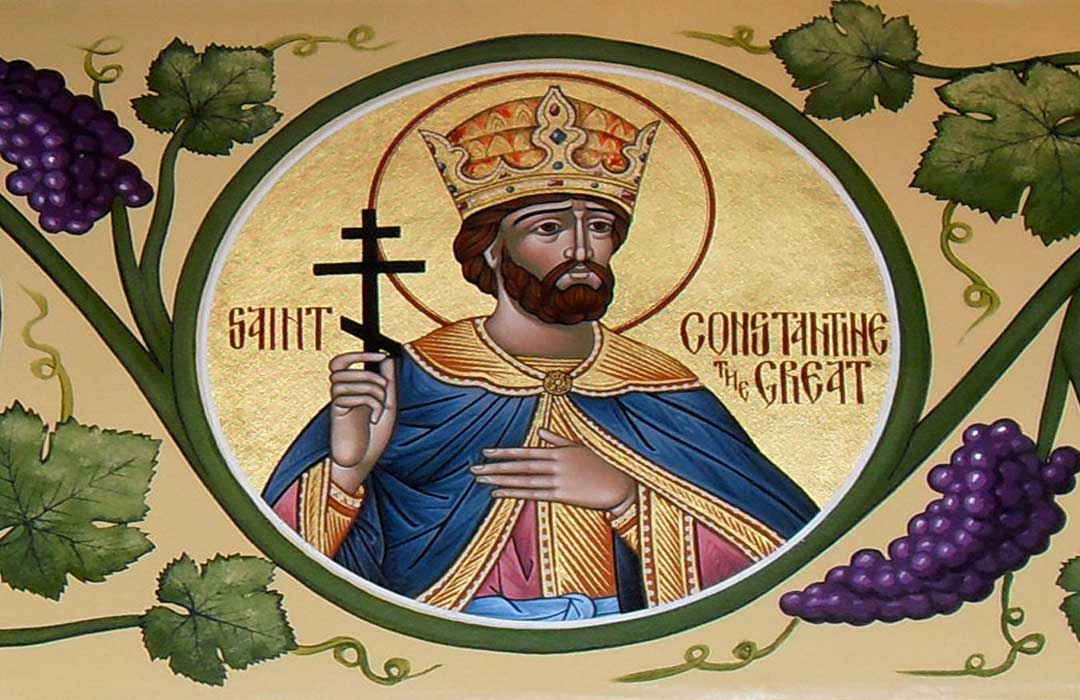The story of Saint Constantine the Great
Constantine the Great was born at Naissus, today’s city of Niš in Upper Moesia (modern Serbia and Montenegro) sometime around 273 A.D. His parents were the high ranked Roman officer Constantius I Chlorus and St Helen. He grew up under the Christian principles of his mother and the military training of his father and received high education from great tutors of his time. Those three factors formed Constantine’s spirit and character.
In 293 A.D. the emperor Diocletian appointed his father the title of one of the two Caesars (some kind of junior emperor). It was at that time that Constantius divorced St Helen because, you see, an Emperor could not be married to an innkeeper’s daughter. However after the divorce mother and child continued to live on the court, to assure Constantius’s loyalty to the throne. Back at the Tetrarchy, in 305A.D. August Maximian resigned and Constantine’s father succeeded to the position. Nevertheless he died the year after with his son standing beside his deathbed in Eboracum (today’s York in England). There, his father’s troops, loyal to his memory, proclaimed him emperor. For the next 18 years Constantine would fight a series of battles and wars that would make him the unquestionable ruler of the Roman Empire and later on he would become the founder of the Byzantine Empire.

St Constantine was the first Roman Emperor that endorsed Christianity. His conversion was the result of an omen. Tradition has it that he was in the middle of the Battle of Milvian Bridge in 312 against Maximilian; one of the most crucial battles in history. As he was looking at the sun he saw a chi-ro (X, P) at the sky and the inscription “By this shall thou conquer”. Inspired by this he established the new flag to be carried to the battle: the labarum. He also placed the inscription and the X-P symbol on his helmet and his soldiers’ shields. Constantine won the battle and was declared the one and only Augustus of the West. He avoided talking about it, but he didn’t hesitate to state to everyone that his final dominance was “Christian’s God will”. On the arch he constructed in remembrance of his victory on 315 he engraved that it was a result of divine inspiration.
As mentioned above, Constantine grew up under the teachings of his mother. Although he received baptism in his late years, as well as his mother, he had always being Christian friendly, as well as his father before him. He often ignored orders from Diocletian and made no discriminations against the Christian soldiers, something quite rare at that time, since Christian religion was considered to be womanish.
His affection to the Christians on one hand and his effort to keep the Empire united on the other drove him and Licinius to the famous Edict of Milan in 313. I have noticed that people usually and wrongfully believe that with this Edict Constantine enforced Christianity to the Empire, but this is not a fact. The Edict – which consisted of pre-existing and unapplied laws of the Empire – was actually used to protect the religious freedom of the Empire’s residents. It didn’t make paganism illegal nor made Christianity the official religion of the state, but legalized Christians, returned confiscated Church property and established Sunday as a day of worship.
——End of Part 1 on Saint Constantine the Great——
Part 2 here…



